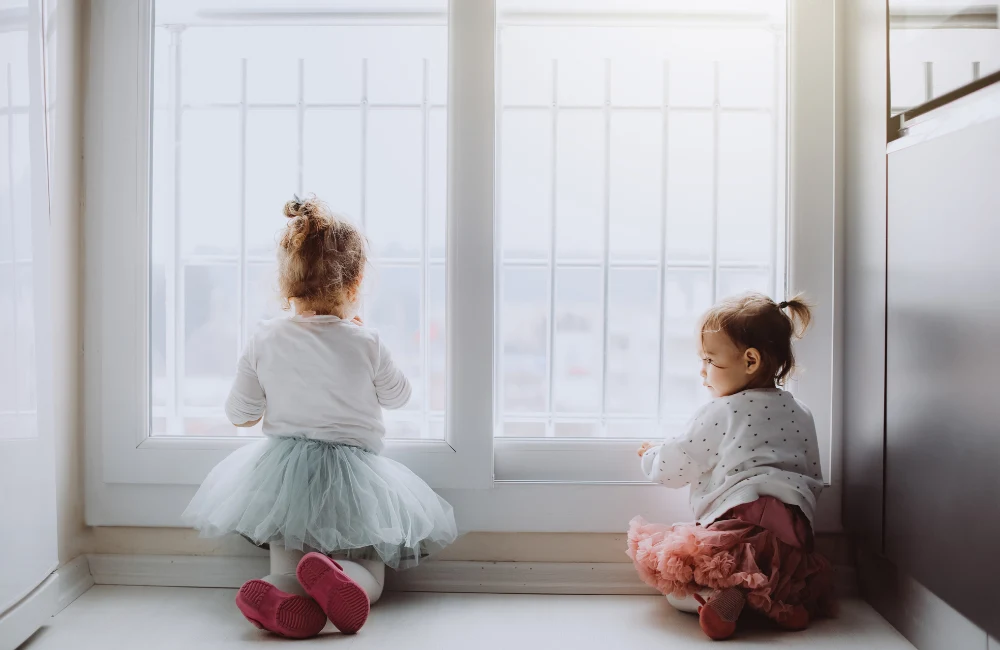
Photo Credit: Canva
By using this site, you agree to our Terms of Use. This post may contain affiliate links. Read our disclosure policy. As an Amazon Associate I earn from qualifying purchases.
Follow us on Instagram for more fun ideas for kids!
I do not and will never force or guilt my children into hugging or showing affection to another child or adult. I also do not want my children to be viewed as rude kids because they don’t meet someone’s expectations by not giving them a hug. There are several other ways for children to engage without hugging. These include a verbal hello, handshake, high five, fist bump, wave, or even an elbow bump.
My children are a little bit older now, ages 11 and 16, so as the years have gone by, our conversation about physical touch and how we greet others has definitely evolved. With that said, as my children have grown, it’s always been important to have conversations about it being their body, and no one is allowed to touch them without their permission, especially in their private areas. They need to be taught and talked to about the basics of consent and what that means. I’ve also always told them to trust their gut and intuition, as it most often will steer them in the right direction.
Teaching younger children how to greet people
When they were little, I was and always have been an advocate for a respectful greeting to those we see outside of the home or meet in a new setting. This means saying hello, making eye contact, and acknowledging the other person in that way. I absolutely always encourage them to greet someone, as ignoring someone has and never will be encouraged.
If I did make my children hug someone upon greeting, especially when they were little, they may not be able to learn and differentiate between the different love languages and what level of physical touch is appropriate and which is not. For example, maybe they’re meeting their Aunt or Uncle for the first time, I wouldn’t expect them to show the family member any sort of affection right away, but the Aunt and Uncle may have different expectations.
Empowering our children to make their own decision
Hugging or kissing someone is usually interpreted as inviting or letting someone into your own personal space. It’s ok for children and us as adults to not always be willing to offer that form of invitation. It’s also not our place to question our children whether they want to show affection upon greeting or not. It is our responsibility as parents to have conversations with our children about physical touch, expectations, building trust with others, giving them the confidence to decide for themselves what they’re comfortable with. We need to empower them with the decision making, deciding for him or herself what they are feeling, giving them a sense of independent self.
My children’s personalities are different, therefore they make different decisions
Remember, every kid is different. My oldest son has never been one to greet people with an infinite hello and/or affection. It’s uncomfortable for him and it takes much more time to warm up to someone, to get to know them, and to engage in full conversation than his younger brother. I have learned over the years, this is his personality and I don’t necessarily push him in that. I let him engage and show affection to family or friends on his own timeline, when he’s comfortable. On the other hand, my 11-year-old isn’t as hesitant and is happy to show affection with a hug when greeting someone and fully engages in conversation with adults. He’s comfortable with both. Keep in mind, these two boys were raised in the same household, same rules, environment, and consequences and they’re both very different in their choices of affection and physical touch.
Building trust and quality time with my children is important
Love and trust with someone aren’t always defined by a hug. It’s sometimes the quality of investment, time and energy that Grandma or Grandpa may invest in my children that builds trust and allows love to grow. Time invested in effort in building a connection. If a family member is alarmed by the child not hugging them upon greeting or it hurts their feelings, I think it’s important to have a conversation explaining what you’ve taught your children and that you’ve made it their decision to hug them or not. Rather than expecting a hug, try explaining to the family that there are other ways to connect with your child, including sitting beside them and engaging in play, or reading books together. Give the child time to warm up to another person and chances are if a trusting connection is formed during that time, they may just be comfortable enough to hug Grandma or Grandpa when it’s time to leave. Regardless, it needs to be their decision.
There may be a better time to talk about expectations than at the moment
I often have conversations with my children while we’re in the car, on our way to meet family or new people. I let them know my expectations of greeting others and that it is their choice. I think it’s a more comfortable conversation beforehand, rather than asking the question if they want to hug them, in front of the other person. It’s a lot less pressure, not in the moment, and won’t make the child feel like there is a right or wrong answer.
Recognize and respect personal space
We are all different and we all have different sizes of personal space allowances. Respecting each other, our children, and what their comfort levels are is important. There are times when I don’t even want to hug someone or show affection and it’s expected, but I don’t do it either unless I’m comfortable in the situation or with the person. As adults, I feel we need to be more accepting of a child’s differences rather than forcing a one size fits all personality. Recognize and respect your own feelings and your child’s.
I’ll end by saying that this is a very controversial parenting topic, one that some may feel very strongly on one side or the other. I think it’s important to really listen and hear someone else’s view on things that may be controversial, and then from that information and sometimes based on one’s experience, form my own opinion. Within forming that opinion, making my own choices of how and what to teach my own children. To each his own.
Check out more Parenting Articles
Tips to Communicate More Effectively With Your Kids
Teach Your Kids To Choose Good Friends
Positive Parenting: How Do I Fix Positivity In My Kids At An Early Age

Jodi is a fun-loving mom of two boys, ages 16 and 11, who live in Minneapolis, Minnesota. As a stay-at-home mom over the years she has taken on the role of renovating just about every space in their home. She enjoys photography, being a brand partner for Young Living essential oils, sports, reading, crafts, exercise, cooking, plants and gardening. Her love language is acts of service and she’s an Enneagram type two, wing three. Follow her on Instagram @jodileigham
Agnes Hsu is a mom of three and has been inspiring parents and kids to get creative with easy activities and family friendly recipes for over 10 years. She shares her love for creative play and kids food to her 2MM+ followers online. Agnes' commitment to playful learning and kindness has not only raised funds for charity but also earned features in prestigious nationwide publications.

